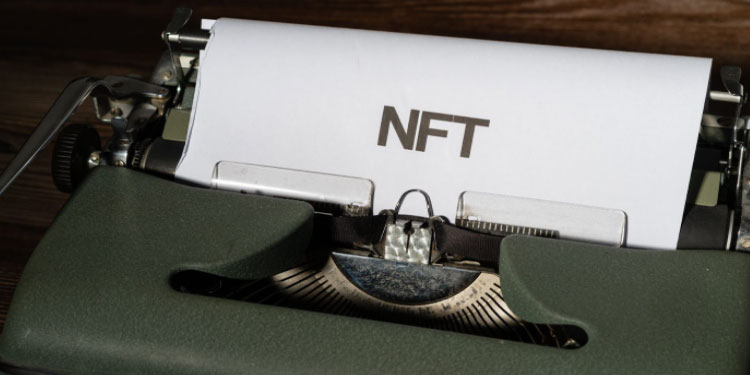A digital asset known as an NFT can be anything, including in-game items, movies, and music. They are often encoded using the same software as many other cryptocurrencies, and they are frequently bought and sold online in exchange for other cryptocurrencies.
Despite the fact that NFTs have been around since 2014, they have just recently gained popularity as a more widely used method of buying and selling digital art. Surprisingly, $41 billion was spent on the NFT market in just 2021, which is nearly equal to the amount spent on the global fine art market. NFTs are frequently one of a kind or at least limited in quantity and have distinctive identification codes.
So, what is the significance of Coca-Cola and CryptoCom launching NFTs?
Coca-Cola and CryptoCom NFT
The FIFA World Cup inspired the Coca-Cola and Crypto.com NFT collection in Qatar in 2022. The show is built on “heat maps,” which visually represents the football players’ motions and outstanding moments during the competition. It was created in collaboration with digital artist GMUNK. From May 1 through July 31, 2022, fans could purchase 10,000 NFTs that GMUNK created based on these heat maps via the Crypto.com NFT platform.
Users must first register for an account on the Crypto.com NFT platform and mint a token on the Coca-Cola fan zone page in order to access the NFT collection.
The Coca-Cola fan zone is a virtual centre for the FIFA World Cup in Qatar in 2022 that allows fans to participate in activities, thrills, and memorable moments. The fan zone offers pledges, leaderboards, and predictions in addition to the NFT collection, allowing viewers to compete with one another and participate in the event in real-time.
Even though the announcement is intended for a global audience, the registration sites—either Coca-Cola Middle East or the fan zone links officially provided—only provide alternatives for people who reside in Qatar, Saudi Arabia, or the United Arab Emirates.
Collab Between the Artist, Exchange and FIFA Reps
GMUNK stated in a formal news release that he was inspired to create his digital art by the Coca-Cola “piece magic” series. The collection illustrates the intensity and tenacity of the World Cup players as they compete on the pitch by using football data as a paintbrush to define densities, behaviours, and colour applications.
Nazli Berberoglu, the general manager of the FIFA World Cup, stated his love for the collaboration with GMUNK and expressed his admiration for both his artistic ability and the collection’s overall elegance.
Berberogulu mentions that “A superb talent who has consistently pushed the boundaries of art’s newest and most exciting field, GMUNK’s ‘heatmap’-inspired NFTs will capture the passion and determination shown by players during the World Cup – as they battle it out on the pitch, their athleticism and performance will inspire incredible works of digital art.”
Steven Kolifowitz, the Chief Marketing Officer of Crypto.com, decided to focus more on this partnership’s potential benefits for the brand’s growth and adoption of decentralised technologies. He mentions, “This year’s FIFA World Cup will be the first to leverage Web3 technology,” said Kalifowitz. “It’s a privilege to partner with Coca-Cola and GMUNK to memorialise these historical matches that will forever be captured on the blockchain. Together we are creating a completely new form of memorabilia.”
Sports Marketing on the Rise
There is more than Crypto.com’s NFT collection that draws inspiration from the FIFA World Cup. Crypto experts Bitcode Method mentioned that Visa worked with the well-known cryptocurrency exchange to launch an NFT collection based on iconic goals scored by football players, including Jared Borgetti, Tim Cahill, Carli Lloyd, Michael Owen, and Maxi Rodriguez.
However, not every sports transaction made on Crypto.com have been beneficial. A sponsorship deal with UEFA had to be abruptly cancelled by the exchange because of legal concerns. In return, Gazprom agreed to stop being the European League’s official sponsor.
However, this new NFT collection would merely be the company’s most recent foray into sports, given that Crypto.com was the official sponsor of the Qatar 2022 World Cup. To bring cryptocurrencies to a larger audience, the exchange spent millions on advertising, sponsorships, and partnerships in the sports sector, from Formula 1 to eSports.
Some of the very earliest NFTs were gamified crypto collectables. The game helped establish algorithmically generated graphics, gaining minor popularity over time. It can be challenging to comprehend how swiftly events can emerge out of nowhere and change our perceptions of the future. NFTs have begun a new chapter in the history of art and technology, and it doesn’t seem that this will change. Whether you like it or not, the rise of digital art and the tremendous value it commands have, in some ways, threatened the status quo of the art and collectables world. The billion-dollar market’s explosive growth is proof that many people prefer investing in digital art over traditional art.






















